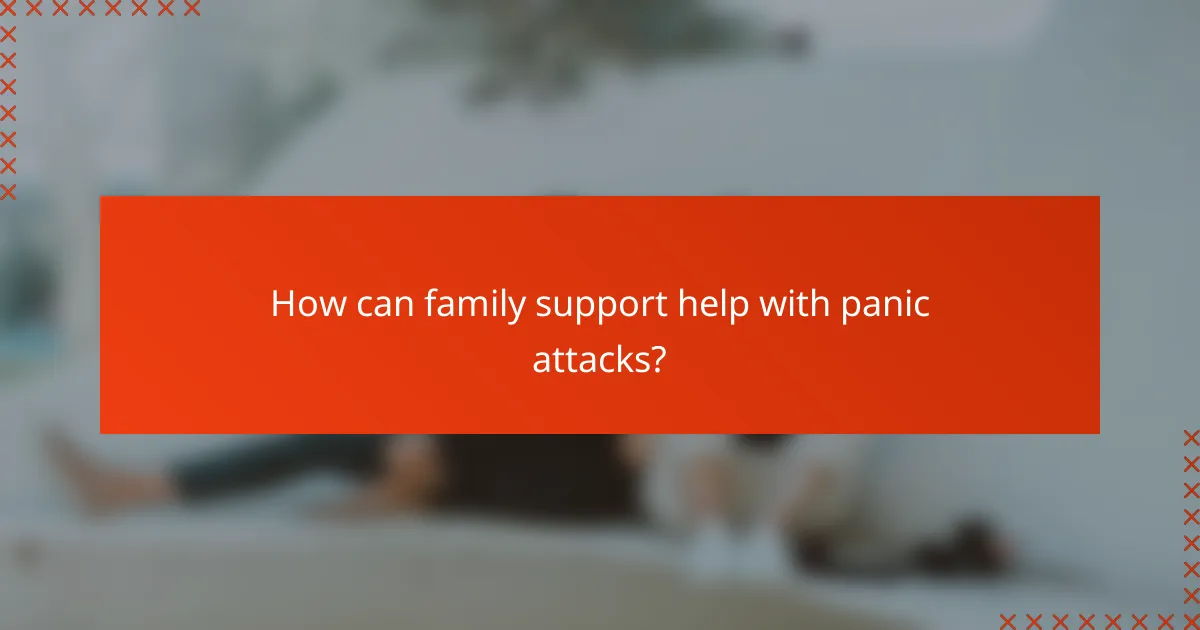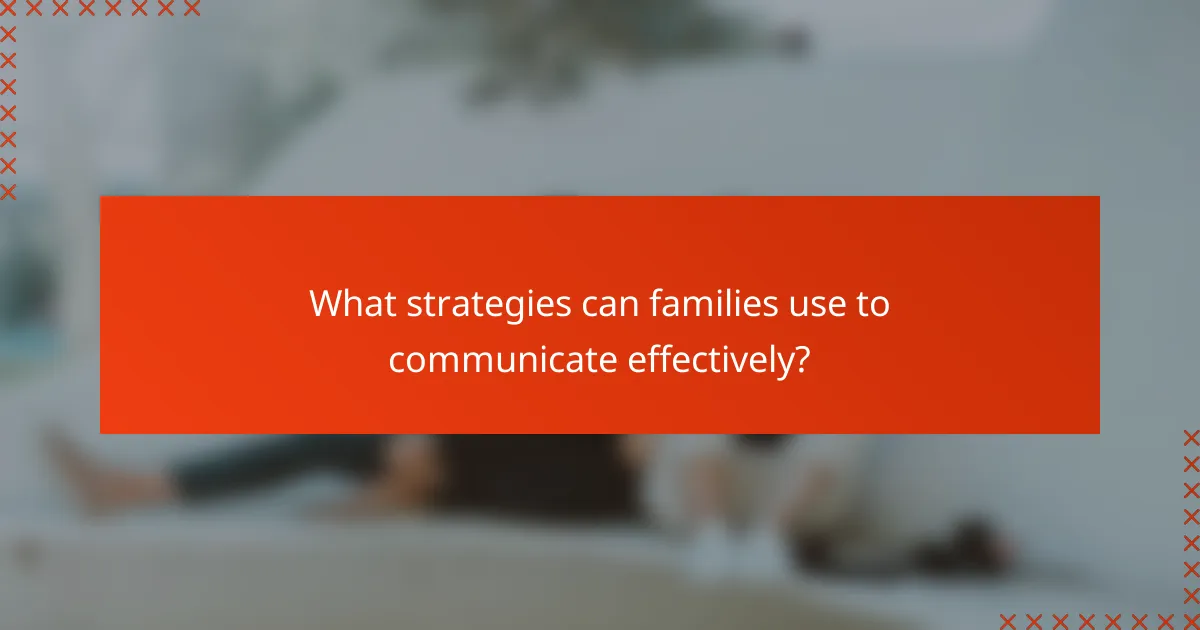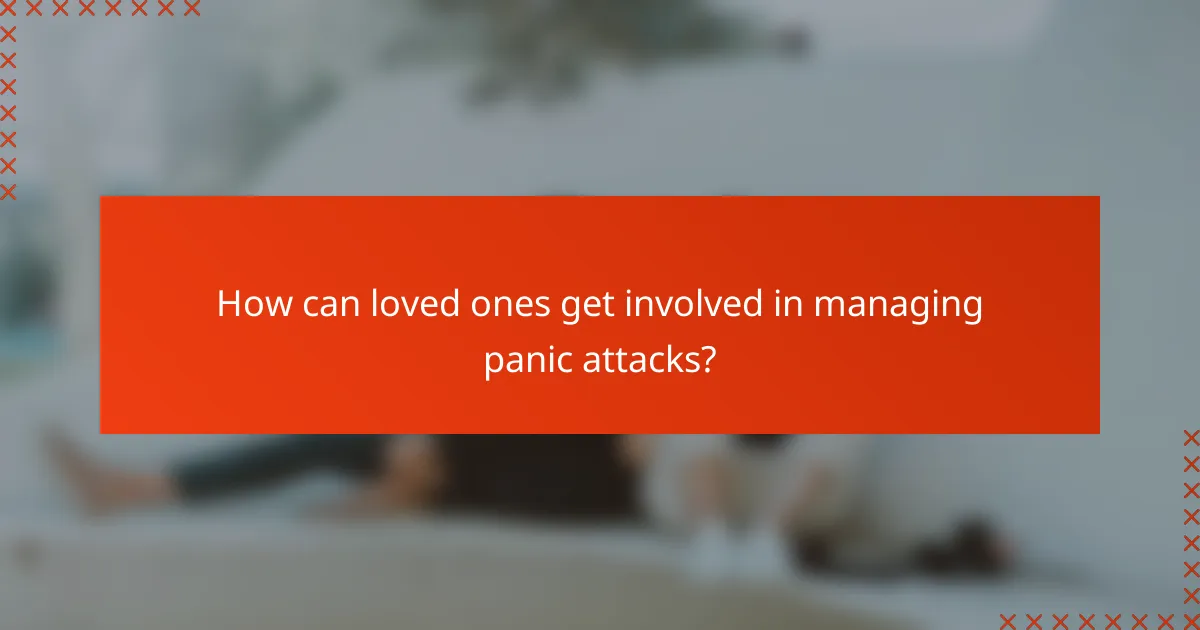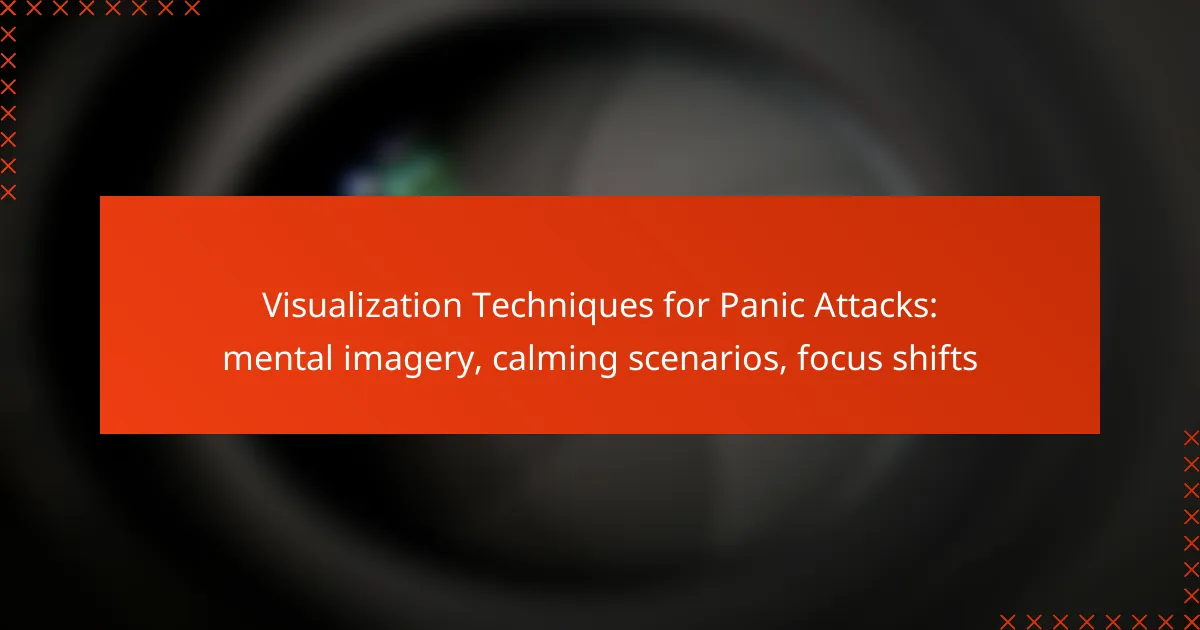Family support is essential for individuals experiencing panic attacks, as it offers emotional comfort and practical assistance during difficult times. By fostering open communication and understanding, loved ones can create a safe environment that encourages recovery and resilience. Involvement from family members not only helps in managing panic attacks but also strengthens the bonds of support and trust within the family unit.

How can family support help with panic attacks?
Family support can significantly alleviate the impact of panic attacks by providing emotional comfort, practical help, and encouragement to seek professional assistance. Understanding and involvement from loved ones can create a safe environment that fosters recovery and resilience.
Emotional reassurance
Emotional reassurance is crucial for individuals experiencing panic attacks. Family members can offer a calming presence, helping to reduce feelings of fear and isolation. Simple affirmations like “I’m here for you” or “You’re not alone” can make a significant difference in how a person copes with their anxiety.
Listening without judgment is also vital. Allowing the person to express their feelings openly can help them process their experiences and feel understood. This open communication fosters trust and strengthens the family bond.
Practical assistance
Practical assistance involves helping loved ones manage their daily lives during periods of heightened anxiety. Family members can assist with tasks that may feel overwhelming, such as running errands, attending appointments, or even just being present during stressful situations. This support can alleviate some of the pressure that contributes to panic attacks.
Creating a structured environment can also help. Establishing routines or safe spaces at home where the individual feels secure can reduce anxiety triggers. For example, designating a quiet area for relaxation or mindfulness practices can be beneficial.
Encouragement to seek professional help
Encouraging loved ones to seek professional help is a critical aspect of family support. It’s important to approach this topic sensitively, emphasizing that therapy or counseling can provide effective coping strategies. Family members can suggest resources or accompany the individual to appointments, making the process less daunting.
Understanding the types of professionals available, such as psychologists or licensed counselors, can also aid in this encouragement. Families can research local options together, which may include support groups or mental health services covered by health insurance, making it easier for the individual to take that first step towards recovery.

What strategies can families use to communicate effectively?
Families can enhance communication about panic attacks by employing specific strategies that foster understanding and support. Key approaches include active listening, asking open-ended questions, and creating a safe environment for discussions.
Active listening techniques
Active listening involves fully concentrating on what the other person is saying, rather than just hearing their words. This can be achieved by maintaining eye contact, nodding, and providing verbal affirmations like “I understand” or “Go on.” These techniques show that you value their feelings and experiences.
Encourage family members to paraphrase what they’ve heard to confirm understanding. For example, saying “So what you’re saying is…” can help clarify any misunderstandings and demonstrate empathy.
Open-ended questions
Open-ended questions invite deeper conversation and allow individuals to express their feelings more freely. Instead of asking, “Did you feel anxious?” try “What was going through your mind when you felt anxious?” This encourages a more detailed response and helps family members understand the nuances of the experience.
Using phrases like “Can you tell me more about that?” or “How did that make you feel?” can further promote dialogue and provide insights into their emotional state, fostering a supportive atmosphere.
Creating a safe space for discussions
Establishing a safe space for discussions about panic attacks is crucial for open communication. This means choosing a comfortable environment where family members feel secure and free from judgment. Ensure that conversations are private and free from distractions to encourage honesty.
Set ground rules for discussions, such as no interruptions and respect for each other’s feelings. This approach helps create an atmosphere of trust, making it easier for loved ones to share their experiences and seek support when needed.

How can loved ones get involved in managing panic attacks?
Loved ones can play a crucial role in managing panic attacks by providing support, understanding, and involvement in the recovery process. Their participation can help create a safe environment for individuals experiencing panic disorder, fostering open communication and shared coping strategies.
Participating in therapy sessions
Involving family members in therapy sessions can enhance the treatment process for someone dealing with panic attacks. This participation allows loved ones to understand the dynamics of panic disorder and learn effective ways to support the individual during episodes.
Therapists often encourage family involvement to facilitate better communication and to address any misconceptions about panic attacks. This collaborative approach can strengthen relationships and build a supportive network around the person affected.
Learning about panic disorder
Educating loved ones about panic disorder is essential for fostering empathy and understanding. Knowledge about the symptoms, triggers, and effects of panic attacks can help family members respond appropriately during an episode.
Resources such as books, articles, and support groups can provide valuable information. Understanding that panic attacks are not a sign of weakness but a medical condition can help reduce stigma and promote a supportive atmosphere.
Practicing coping techniques together
Practicing coping techniques together can empower both the individual experiencing panic attacks and their loved ones. Techniques such as deep breathing, mindfulness, and grounding exercises can be more effective when practiced in a supportive environment.
Setting aside time to practice these strategies can help loved ones feel more equipped to assist during a panic attack. Regular practice can also help the individual feel less isolated and more connected to their support system.

What role does education play in family support?
Education is crucial in family support for individuals experiencing panic attacks, as it helps loved ones understand the condition and respond effectively. By learning about panic attacks, family members can provide empathetic support and create a safe environment for open communication.
Understanding panic attack symptoms
Panic attack symptoms can vary but often include rapid heartbeat, shortness of breath, dizziness, and feelings of impending doom. Recognizing these signs enables family members to identify when someone is experiencing a panic attack and respond appropriately. For instance, remaining calm and offering reassurance can help alleviate some of the distress.
It’s also important for family members to understand that symptoms can mimic other medical conditions, which can lead to confusion. Encouraging the affected individual to seek professional help can clarify the situation and provide further guidance.
Recognizing triggers
Identifying triggers is essential for managing panic attacks effectively. Common triggers may include stressful situations, specific environments, or even certain thoughts. Family members should engage in conversations to help the individual pinpoint these triggers and develop strategies to cope with them.
Creating a list of known triggers can be beneficial. For example, if crowded places are a trigger, family members can plan outings that avoid such environments or prepare the individual for potential anxiety-inducing situations.
Accessing educational resources
There are numerous resources available for families seeking to educate themselves about panic attacks. Websites, books, and support groups can provide valuable information and coping strategies. Organizations like the Anxiety and Depression Association of America (ADAA) offer resources tailored for families.
Additionally, attending workshops or seminars can enhance understanding and provide practical tools for supporting a loved one. Families should actively seek out these resources to foster a supportive environment and improve communication regarding panic attacks.

How can families create a supportive environment?
Families can create a supportive environment for individuals experiencing panic attacks by fostering open communication, understanding, and involvement. This includes educating loved ones about panic attacks and encouraging a consistent routine that promotes emotional well-being.
Establishing routines
Establishing routines can provide a sense of stability for individuals prone to panic attacks. Regular schedules for daily activities, such as meals, exercise, and relaxation, can help reduce anxiety by creating predictability.
Involve the entire family in setting these routines. For example, designate specific times for family dinners or weekly outings, which can strengthen bonds and provide a supportive atmosphere. Consistency is key, so try to stick to these routines as closely as possible.
Encouraging healthy lifestyle choices
Encouraging healthy lifestyle choices is essential for managing panic attacks. A balanced diet, regular physical activity, and adequate sleep can significantly impact mental health. Families should aim to engage in these activities together, making them enjoyable and less of a chore.
Consider incorporating stress-reducing practices such as yoga or mindfulness exercises into family routines. Limiting caffeine and alcohol can also help, as these substances may trigger anxiety in some individuals. Open discussions about these choices can promote understanding and commitment within the family unit.



